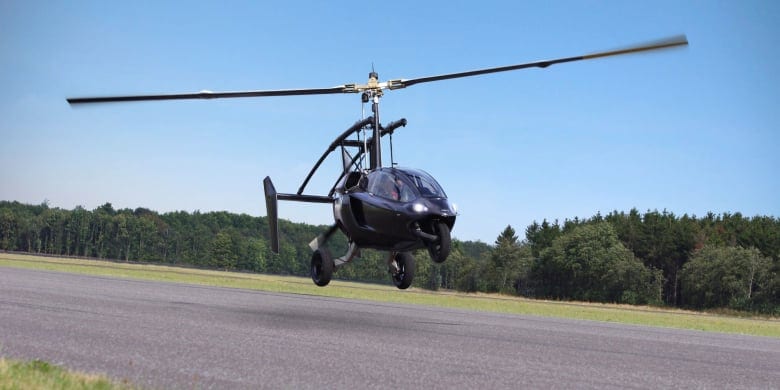
The European Union Aviation Safety Agency (EASA) has given full certification basis to its first flying car, PAL-V’s Liberty, marking a major step in flying cars becoming commercially available to customers. (PAL-V)
The European Union Aviation Safety Agency (EASA) has given full certification basis to its first flying car, PAL-V’s Liberty, the company announced on Feb. 23. This marks a major step in flying cars becoming commercially available to customers.
PAL-V completed 10 years of testing to achieve this certification, according to the company.
“Getting a flying car to the market is hard. It takes at least 10 years,” Robert Dingemanse, PAL-V’s CEO, said in a press statement. “Although we are experienced entrepreneurs, we learned that in aviation everything is exponentially stricter. Next to the aircraft, all aspects of the organization, including suppliers and maintenance parties must be certified.”
EASA’s special condition for gyroplane road vehicle use was issued on Feb. 10 and provides type certification for PAL-V’s two-seat gyroplane powered by two reciprocating engines with a maximum take-off weight of 910 kg, according to the document.
PAL-V’s Liberty has a max speed of 180 km/h and a range of 400 km when in flight mode, according to the company’s website.

EASA’s special condition for gyroplane road vehicle use was issued on Feb. 10 and provides type certification for PAL-V’s two-seat gyroplane powered by two reciprocating engines with a maximum take-off weight of 910 kg. (PAL-V)
“Being a gyroplane, which is a kind of rotorcraft, the certification requirements for this product need to differ in certain aspects from those of helicopters,” the special condition states. “A part of the CS-27 technical specifications is not directly applicable to gyroplanes. This CS is also more helicopters oriented. It is, therefore, necessary to address the particularities of a gyroplane by establishing specific technical specifications in the form of a SC.”
The special conditions also acknowledge the dual functionality of Liberty as a gyroplane and road vehicle.
There were over 1,500 criteria that PAL-V worked with EASA on to make Liberty certifiable, according to the release. A final version of the criteria was published last week.
“I’m proud to see the results of our work. We can now speed up the completion of the compliance demonstration phase,” Cees Borsboom, PAL-V Head of Airworthiness, said in a press statement. “It’s hard to grasp the amount of work required to certify an aircraft. The sign-off of 1,500 requirements already in 2012, before starting manned test flights, was the beginning. The development of the requirements started in 2009. More than 10 years of analysis, test data, flight tests, and drive tests, led to this important milestone. In parallel, we already started compliance demonstration to obtain the type certificate, which will be followed by delivery of vehicles to our customers.”
PAL-V will complete a final phase of compliance demonstrations before it is available to customers, according to the release.
“Safety is key in developing the Liberty, we are privileged to work with top experts of EASA,” Mike Stekelenburg, CTO of PAL-V, said in a press statement. “Their high safety standards also allow the Liberty to be used professionally. From the start, we built the Liberty to comply with existing regulations. This strategy provides the fastest route to market.”